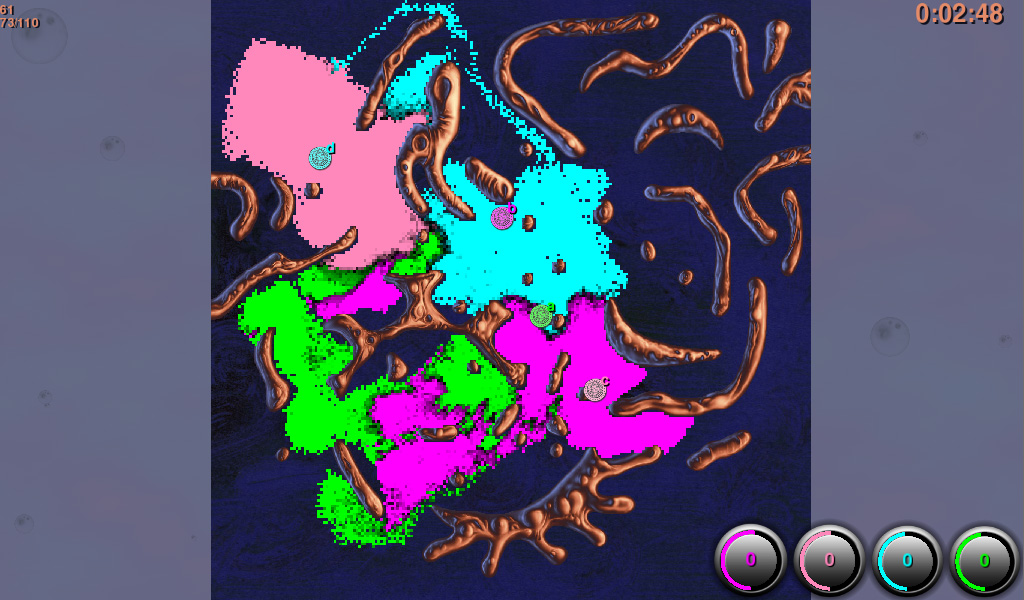

More broadly, intermolecular forces have several possible contributions: Accordingly, van der Waals forces can range from weak to strong interactions, and support integral structural loads when multitudes of such interactions are present.
#LIQUID WAR INTERACTION FREE#
The strength of pairwise van-der-Waals type interactions is on the order of 12 kJ/mol (120 meV) for low-melting Pb and on the order of 32 kJ/mol (330 meV) for high-melting Pt, which is about one order of magnitude stronger than in Xe due to the presence of a highly polarizable free electron gas. The interactions between atoms in metals can also be effectively described as van-der-Waals interactions and account for the observed solid aggregate state with bonding strengths comparable to covalent and ionic interactions. These van der Waals interactions are up to 40 times stronger than in H 2, which has only one valence electron, and they are still not strong enough to achieve an aggregate state other than gas for Xe under standard conditions. For example, the pairwise van der Waals interaction energy for more polarizable atoms such as S atoms in H 2S and sulfides exceeds 1 kJ/mol (10 meV), and the pairwise interaction energy between even larger, more polarizable Xe atoms is 2.35 kJ/mol (24.3 meV).

The strength of van-der-Waals bonds increases with higher polarizability of the participating atoms. The corresponding vaporization energies of H 2 and O 2 molecular liquids, which result as a sum of all van der Waals interactions per molecule in the molecular liquids, amount to 0.90 kJ/mol (9.3 meV) and 6.82 kJ/mol (70.7 meV), respectively, and thus approximately ~15 times the value of the individual pairwise interatomic interactions (excluding covalent bonds). For example, the pairwise attractive van der Waals interaction energy between H atoms in different H 2 molecules equals 0.06 kJ/mol (0.6 meV) and the pairwise attractive interaction energy between O atoms in different O 2 molecules equals 0.44 kJ/mol (4.6 meV). Van der Waals forces are often among the weakest chemical forces. When the interatomic distance is greater than 1.0 nm the force is not strong enough to be easily observed as it decreases as a function of distance r approximately with the 7th power (~ r −7). For individual atoms, the equilibrium distance is between 0.3 nm and 0.5 nm, depending on the atomic-specific diameter.

The force is repulsive at very short distances, reaches zero at an equilibrium distance characteristic for each atom, or molecule, and becomes attractive for distances larger than the equilibrium distance. This shift generates a transient charge which a nearby atom can be attracted to or repelled by. Specifically, the electron density may temporarily shift more greatly to one side of the nucleus. The force results from a transient shift in electron density. They differ from covalent and ionic bonding in that they are caused by correlations in the fluctuating polarizations of nearby particles (a consequence of quantum dynamics ). Van der Waals forces include attraction and repulsions between atoms, molecules, as well as other intermolecular forces. The van der Waals forces are usually described as a combination of the London dispersion forces between "instantaneously induced dipoles", Debye forces between permanent dipoles and induced dipoles, and the Keesom force between permanent molecular dipoles whose rotational orientations are dynamically averaged over time. If no other force is present, the distance between atoms at which the force becomes repulsive rather than attractive as the atoms approach one another is called the van der Waals contact distance this phenomenon results from the mutual repulsion between the atoms' electron clouds. It also underlies many properties of organic compounds and molecular solids, including their solubility in polar and non-polar media. Named after Dutch physicist Johannes Diderik van der Waals, the van der Waals force plays a fundamental role in fields as diverse as supramolecular chemistry, structural biology, polymer science, nanotechnology, surface science, and condensed matter physics. The van der Waals force quickly vanishes at longer distances between interacting molecules. Unlike ionic or covalent bonds, these attractions do not result from a chemical electronic bond they are comparatively weak and therefore more susceptible to disturbance. In molecular physics, the van der Waals force is a distance-dependent interaction between atoms or molecules.

Microfiber cloth makes use of van der Waals force to remove dirt without scratches.


 0 kommentar(er)
0 kommentar(er)
